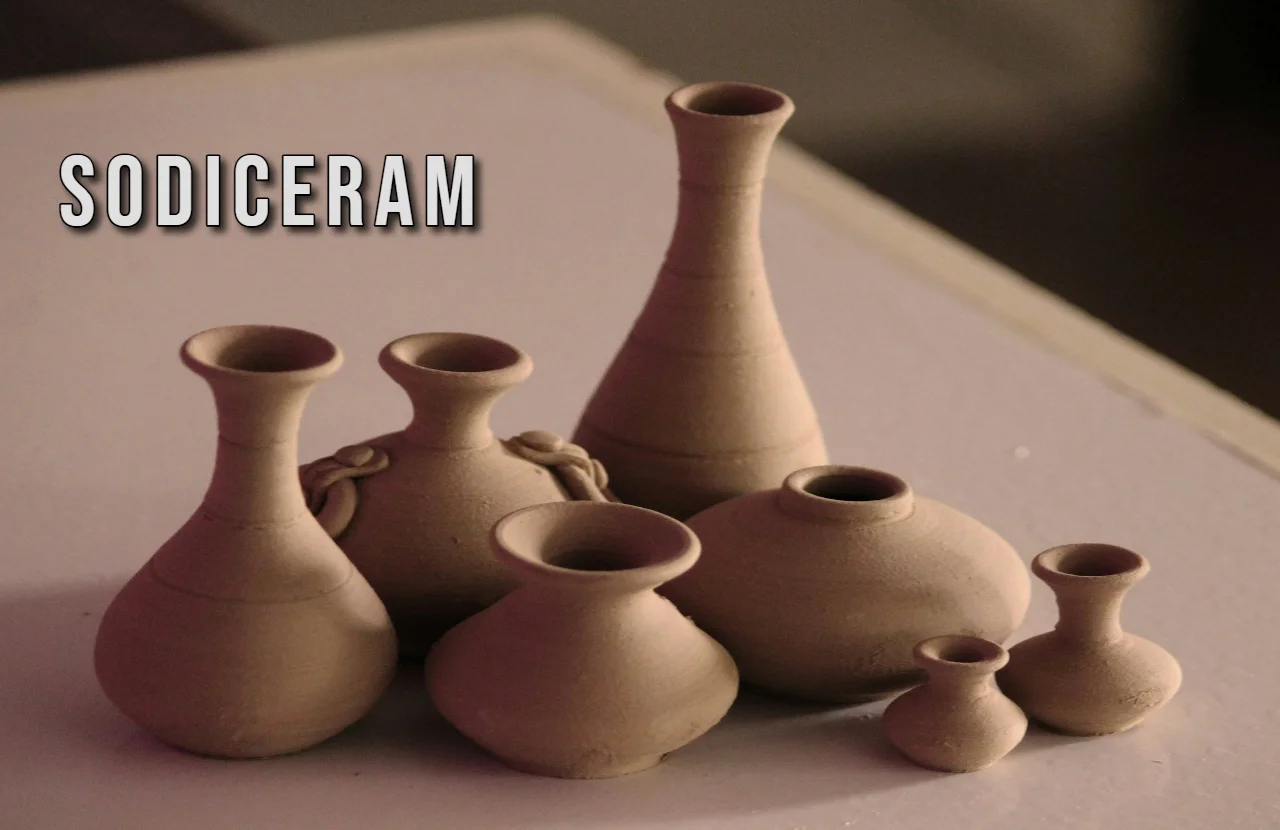In a world where technology touches every aspect of our daily lives, even the materials that make up our homes are becoming smarter. Meet Sodiceram, the next evolution in ceramics that blends design, durability, and digital intelligence. Think of it as the “Silicon Valley” of tiles — where art meets algorithm and aesthetics meet innovation.
What Is Sodiceram?
At its core, Sodiceram refers to a sodium-enhanced ceramic material engineered for strength, beauty, and adaptability. Unlike traditional ceramics that simply serve as tiles, pottery, or architectural elements, Sodiceram is designed to interact with its environment. From smart temperature regulation to adaptive lighting integration, these materials are built to transform static surfaces into responsive, functional systems.
Essentially, Sodiceram represents a new generation of “smart ceramics” that can blend seamlessly into both modern architecture and advanced technology ecosystems. It’s not just a product — it’s a platform for creativity and intelligent living.
A Brief History of Ceramic Evolution
To understand the marvel that is Sodiceram, we need to look at how far ceramics have come.
Thousands of years ago, humans shaped the first clay vessels for food and storage. These were purely functional and required careful firing in rudimentary kilns. Over centuries, ceramics evolved — from ancient pottery in Mesopotamia to porcelain mastery in China and artful tiles in Islamic architecture.
But the 21st century brought a shift: ceramics are no longer just about beauty. They’re about performance. Modern ceramics are used in jet engines, electronics, and even artificial bones. And that’s where Sodiceram enters the stage — merging the beauty of traditional craftsmanship with the brilliance of modern science.
The Science Behind Sodiceram
So, what makes Sodiceram so special? The answer lies in its chemical composition and structural engineering.
- Sodium Enrichment:
Sodium compounds are used during the vitrification process — the stage where raw clay turns into a dense, glass-like material. This modification helps in controlling porosity, improving surface hardness, and enhancing thermal shock resistance. - Micro-crystalline Network:
The inner structure of Sodiceram is built with a network of fine crystals that interlock under high heat. This microstructure reduces brittleness and boosts mechanical strength. - Hybrid Functional Coatings:
Many Sodiceram surfaces come with nano-coatings that provide antibacterial, anti-slip, and water-repellent properties. These coatings not only extend durability but also make cleaning and maintenance remarkably easy. - Smart Integration:
Advanced versions of Sodiceram include embedded sensors capable of detecting temperature changes, light intensity, or moisture levels — perfect for smart homes and sustainable construction.
Why Sodiceram Is the Future of Architecture
Imagine a kitchen floor that adjusts its temperature in winter or a bathroom wall that glows softly when you enter. Sounds like something out of science fiction? Not anymore. Sodiceram makes this possible.
Here’s why architects, designers, and engineers are turning their heads toward it:
1. Unmatched Durability
Sodiceram materials boast exceptional compressive strength and low water absorption, making them ideal for high-traffic areas. Their resistance to chemicals, stains, and scratches ensures long-term performance in both residential and commercial spaces.
2. Temperature and Moisture Adaptability
The smart variants of Sodiceram can regulate their thermal conductivity, creating comfortable indoor climates. They can also withstand rapid temperature fluctuations — crucial for outdoor installations in extreme climates.
3. Aesthetic Flexibility
Sodiceram can mimic virtually any texture — from marble and wood to metal or fabric — without compromising on its ceramic properties. The result? Endless creative possibilities for designers.
4. Sustainability and Eco-Friendliness
Manufacturers use energy-efficient kilns, recyclable materials, and low-emission processes to produce Sodiceram. Its longevity also reduces replacement waste, aligning perfectly with sustainable building principles.
5. Smart Integration
The biggest game-changer is its compatibility with the Internet of Things (IoT). Embedded sensors can connect with smart home systems, monitoring temperature, humidity, and air quality. This transforms ordinary surfaces into intelligent interfaces.
Applications of Sodiceram in Modern Design
Sodiceram’s versatility opens doors across industries. Let’s explore where it’s making the biggest impact.
1. Architectural Interiors
From wall claddings to floors, Sodiceram’s elegant finishes enhance the visual appeal of luxury homes, offices, and hotels. Its durability and stain resistance make it perfect for high-use spaces like kitchens, lobbies, and bathrooms.
2. Public Infrastructure
Airports, train stations, and hospitals require materials that can endure constant wear and still look pristine. Sodiceram’s high mechanical strength and anti-bacterial coatings make it a practical and aesthetic choice.
3. Industrial Facilities
Chemical and pharmaceutical plants demand surfaces that resist corrosion and chemical attack. The sodium-based structure of Sodiceram offers superior protection, ensuring safety and hygiene.
4. Smart Homes
In the age of automation, Sodiceram’s sensor-embedded variants integrate seamlessly with smart lighting and heating systems, offering comfort, convenience, and energy efficiency.
5. Artistic Installations
Designers and artists are also embracing Sodiceram for its 3D printing potential and surface customization. It’s being used to create digital murals, sculptural tiles, and interactive art pieces that respond to touch or motion.
How Sodiceram Is Manufactured
While the exact process varies by manufacturer, the following steps outline how this futuristic material is typically created:
- Material Selection:
High-quality clays, feldspar, quartz, and sodium compounds are chosen to achieve the desired physical and chemical properties. - Mixing and Milling:
The raw ingredients are ground and blended with water to form a fine slurry. Additives are included for strength, elasticity, and thermal control. - Forming and Shaping:
The mixture is pressed into molds or rolled into sheets, depending on the final product type — whether tiles, panels, or customized designs. - Drying and Firing:
Controlled kiln environments heat the ceramics at temperatures up to 1,250°C. The sodium acts as a flux, enhancing vitrification and reducing porosity. - Finishing Touches:
After firing, the surfaces are polished, textured, or coated with functional nano-films that add smart or aesthetic properties. - Quality Testing:
Each batch undergoes rigorous testing for mechanical strength, moisture absorption, and chemical resistance to ensure consistency.
Technical Highlights of Sodiceram
These specifications position Sodiceram among the top-tier performance ceramics available today, bridging the gap between industrial robustness and consumer-level design.
Comparing Sodiceram with Traditional Ceramics
Sodiceram essentially outperforms traditional ceramics in every major category while offering new dimensions of interactivity and sustainability.
Sustainability and Environmental Impact
In an era where environmental responsibility drives innovation, Sodiceram stands out as a material that prioritizes both performance and planet.
Here’s how:
- Low Carbon Production: Advanced kilns reduce energy consumption during firing.
- Recyclable Waste: Manufacturing waste is often reused to minimize landfill contribution.
- Long Lifespan: Because of its toughness, Sodiceram products rarely need replacement, reducing overall material waste.
- Chemical Safety: Its inert composition means it doesn’t release toxins into indoor environments.
The combination of eco-friendly design and longevity makes it a cornerstone of sustainable architecture.
Challenges and Limitations
No innovation is perfect — and Sodiceram, despite its impressive features, comes with a few challenges.
- Cost:
The high-tech manufacturing and sensor integration can make it more expensive than traditional ceramics. - Complex Installation:
Some variants require skilled professionals familiar with smart systems and IoT connectivity. - Maintenance of Smart Features:
While the ceramic layer is nearly maintenance-free, embedded sensors or circuits may need occasional inspection or updates. - Limited Global Availability:
Sodiceram is still emerging in the market, with limited distributors and manufacturers globally.
The Future of Sodiceram
As technology evolves, the next phase for Sodiceram will likely include AI-integrated surfaces, self-cleaning coatings, and renewable energy generation (like photovoltaic ceramic tiles). Imagine walls that can charge your devices or floors that harvest kinetic energy from footsteps — that’s the direction materials like Sodiceram are heading.
The synergy between materials science, nanotechnology, and digital systems will continue to redefine how we think about construction and living spaces. In that vision, Sodiceram is not just a building material — it’s a gateway to intelligent environments.
Conclusion
Sodiceram marks a turning point in material innovation. It fuses tradition with technology — the warmth of ceramics with the intelligence of digital systems. Whether you’re an architect designing a futuristic home or a homeowner seeking durability and elegance, Sodiceram offers a solution that looks good, lasts long, and thinks smart.
In short, it’s not just a tile; it’s a statement — a glimpse into the future where walls, floors, and objects around us are alive with function and form.
FAQs About Sodiceram
1. What makes Sodiceram different from normal ceramics?
Sodiceram uses sodium-based compounds and advanced coatings to enhance durability, reduce porosity, and integrate smart features.
2. Can Sodiceram be used outdoors?
Yes, its thermal stability and weather resistance make it suitable for outdoor walls, patios, and façades.
3. Is Sodiceram eco-friendly?
Absolutely. It’s manufactured with sustainable practices, low emissions, and recyclable materials.
4. Does Sodiceram require special maintenance?
Regular cleaning with mild detergents is enough. For smart versions, periodic checks of sensors are recommended.
5. Where can Sodiceram be installed?
Anywhere — from residential floors and kitchens to commercial buildings, industrial setups, and even artistic installations.

